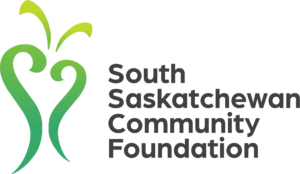Focus Area 4: Sustaining Community Infrastructure
19% of Survey Responses
The Key Takeaway:
Community organizations need investment into the restoration and maintenance of aging assets to operate effectively.
Truth and Reconciliation Calls to Action Addressed:
46.iii UNDRIP
United Nations SDGs Addressed:
4.7, 9.1, 9.4, 12.2, 13.1, 13.3
What are community organizations saying?
- Outdated water and sewer infrastructure.
- Water treatment plants requiring upgrades.
- Buildings in need of maintenance (i.e., old flooring, old doors, old dining hall, etc.).
- Outdated transportation.
Currently we have one boiler running of two that we need to have funding for... The operational costs and infrastructure - those things are kind of tricky to get funding for... The infrastructure challenges we face could be the end of the organization [if they are not addressed]. That would mean approximately 80 students that would disengage in school and not reengage in school throughout one entire year.”
- Bryan Rice, Principal CEO of Cornwall Alternative School
Community Stories
Sustaining Community Infrastructure
Why is this happening?
Much of the infrastructure that exists today was built in the 1970s. The projected lifespan of most infrastructure assets ranges from 40 to 50 years. These numbers indicate that our infrastructure is aging. From stories and survey results captured by community organizations, it is evident that aging infrastructure is also hindering the capacity for organizations to focus on their core missions.
The responsibility of maintaining local public infrastructure rests primarily with the local level of government. For example, in the context of our province, Figure 7 provides a snapshot of public infrastructure ownership compared to the rest of Canada and reveals that Saskatchewan has more municipally owned assets (sometimes exactly at 100%) than the rest of Canada.
The federal government’s role is to cover the costs of infrastructure projects. Historically, this funding model has been adequate. However, challenges with this model arise when existing infrastructure assets need to be updated or replaced. Since local governments have limited financial capacity to address arising infrastructure disruptions, they look to provincial governments for financial assistance. It is challenging for provincial governments to carve out dollars after they have committed funds to priority areas such as health, education, and social services. This leaves municipalities in a difficult situation. As local governments continue to experience financial hardships and increased demand for infrastructure repairs and replacements, community organizations have had to cover some of the infrastructure costs to continue offering services and run programs for their communities.
Figure 7: Municipally Owned Share of Core Public Infrastructure Assets (2020)
Source: Statistics Canada. Table 34-10-0284-01 Estimated replacement value of core public infrastructure assets.
Municipally Owned Share of Core Public Infrastructure Assets
2020
No Data Found
Saskatchewan’s total infrastructure investment between 2002 and 2022 (Figure 8), except for COVID-19 years, shows a strong upward trend. Governments at all levels have committed sizeable investments for new infrastructure to help support community growth and meet modern demand. Between 2002 and 2022, Saskatchewan has more than tripled its investment in new infrastructure assets from $1 billion in 2002 to $3.4 billion in 2022.
Figure 8: Saskatchewan’s Total Infrastructure Investment (2002-2022)
Source: Statistics Canada. Infrastructure Statistics Hub.
Saskatchewan's Total Infrastructure Investment
2002 - 2022
No Data Found
...in Moose Jaw we are in the process of a new building project. Our building in Moose Jaw is old and is falling apart. It is absolutely beyond what we should expect anybody to go to for help... We could have an actual commercial kitchen in Moose Jaw with all the equipment that is necessary. We could much better serve the people who need it in the area. And if we can have a food distribution centre, we could increase capacity not only for us, but also to share food with food banks across the region and make a bigger impact, together.”
- Kathy Ingram, Director of Finance and Development at Souls Harbour Rescue Mission
However, a primary issue is a lack of government funding to support operation and maintenance of existing infrastructure assets. Without such investments, assets can quickly deteriorate and completely lose their usability. Saskatchewan’s current infrastructure backlog – assets in poor or very poor physical condition – amounts to $20 billion. Figure 9 shows that over 10% of Saskatchewan’s assets are in poor or very poor condition. Statistics Canada defines assets falling under the ‘very poor’ category as those that require immediate replacement as the operating asset has less than 10% of expected service life remaining and contains health and safety risks to the public. Assets falling under the ‘poor’ category have 40% of its expected service life remaining. This evidence suggests that Saskatchewan governments face an urgent need to prioritise funding the rehabilitation of infrastructure. Some experts call on the government to adopt a different model of government investment – one that supports the recovery of aging assets, especially during times of high inflation and economic instability (Macklin, 2020).⁶
Figure 9: Share of Assets in Poor or Very Poor Condition, Saskatchewan, 2020
Source: Statistics Canada. Table 34-10-0284-01 Estimated replacement value of core public infrastructure assets.
Share of Assets in Poor or Very Poor Condition
Saskatchewan, 2020
No Data Found
The existing problem of already aging infrastructure is compounded by effects of climate change. Evidence suggests that, in some instances, climate change can reduce the lifespan of infrastructure assets by 20% to 30% (Chinowsky, 2022).⁷ For example, floods that result from early snow melt overwhelm the water systems and lead “to issues like sewage leaks, which can contaminate water supplies” (pg.1, Chinowsky, 2022). Extreme heat can contribute to roads and bridges expanding and contracting too often, leading to potholes and weakening structures. As Canada’s climate is becoming more unstable, re-examining funding priorities is crucial.
If we were into a new building that required less maintenance, it would save us tons of money. We would be able to prioritize more money towards our programming... because right now with the aging infrastructure we’re constantly seeing problems. Like the roof [is damaged], the washrooms are leaking... there are cracks everywhere and we’re constantly spending money on this building. If we had a newer building it would save us a lot of time and money and I’d be able to focus my energy and our funds towards what it actually should be used for - helping our community, our continued programs and expanding our programs.”
- Tyler Gelsinger, Executive Director of Carmichael Outreach Inc.
Highlighted actions being taken across South Saskatchewan:
In 2022, 2.3% of total granted funds distributed through the South Saskatchewan Community Foundation supported the community infrastructure focus area.

A Story of Hope:
The G. Murray and Edna Forbes Foundation Fund Supports Carmichael Outreach’s Basement Floor Repairs

During spring of 2023, SSCF launched its Giving Catalogue as a way for charities to reach out to potential donors with their most prominent and pressing needs. Carmichael Outreach reached out to the community through the Giving Catalogue to seek financial support for urgent building maintenance.
Carmichael Outreach is a non-profit organization supporting the homeless, those living in poverty, with chronic illness, addictions, and mental illness in the community. They settled into their new home in December of 2019 after spending two years renovating the space. As time has passed, there has been some significant basement floor shifting. Every bit of space in Carmichael’s building is utilized, so several offices have been directly impacted by the floor shifting. This includes the inflicting of body aches to staff using the offices.
Unsure where to turn, Carmichael Outreach was hopeful that their needs would be supported by donors through the Giving Catalogue without taking essential money and resources away from their invaluable community-based services.
The fund advisors of the G. Murray and Edna Forbes Foundation Fund held at the SSCF quickly responded to Carmichael’s needs and donated to support the repairs in full at a total of $13,574. Because of this generosity, Carmichael Outreach is able to spend more time and energy focusing on their mission and support community members in need.
Vital Reflections:
The following Vital Reflections are questions you can ask yourself to ponder ways to get involved regarding sustaining community infrastructure. These are intended to be a starting point to get you thinking of how you can help within your own individual capacity:
- What skills, resources, or connections do I possess that could be valuable in helping these charities and infrastructure projects?
- How can I involve local businesses or professionals to provide pro bono services or equipment to charities in need?
- What educational or awareness campaigns can I initiate to engage more community members in the challenges of aging infrastructure for community organizations?
- What organizations have infrastructure and equipment needs that I can support or donate towards?
Help make a difference. Support your community today.
References
6 Macklin, Andrew. 2020. “Addressing the challenges of aging infrastructure”. ReNew Canada.
7 Chinowsky, Paul. 2022. “Canada’s Aging Infrasrtucture is Not Prepared for Climate Change”. Conference of Defence Associations Institute.
8 Infrastructure Canada. 2023. “The governments of Canada and Saskatchewan invest in 21 infrastructure projects to build stronger communities across Saskatchewan.”




